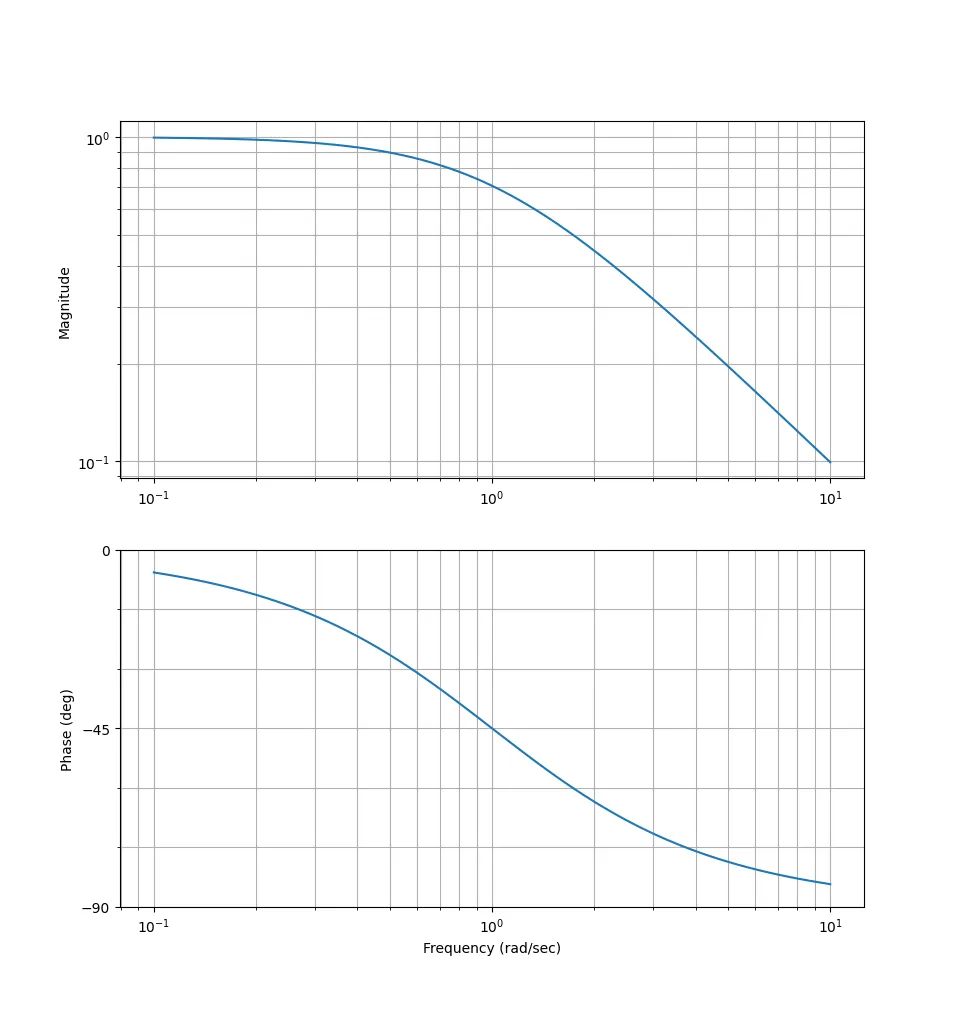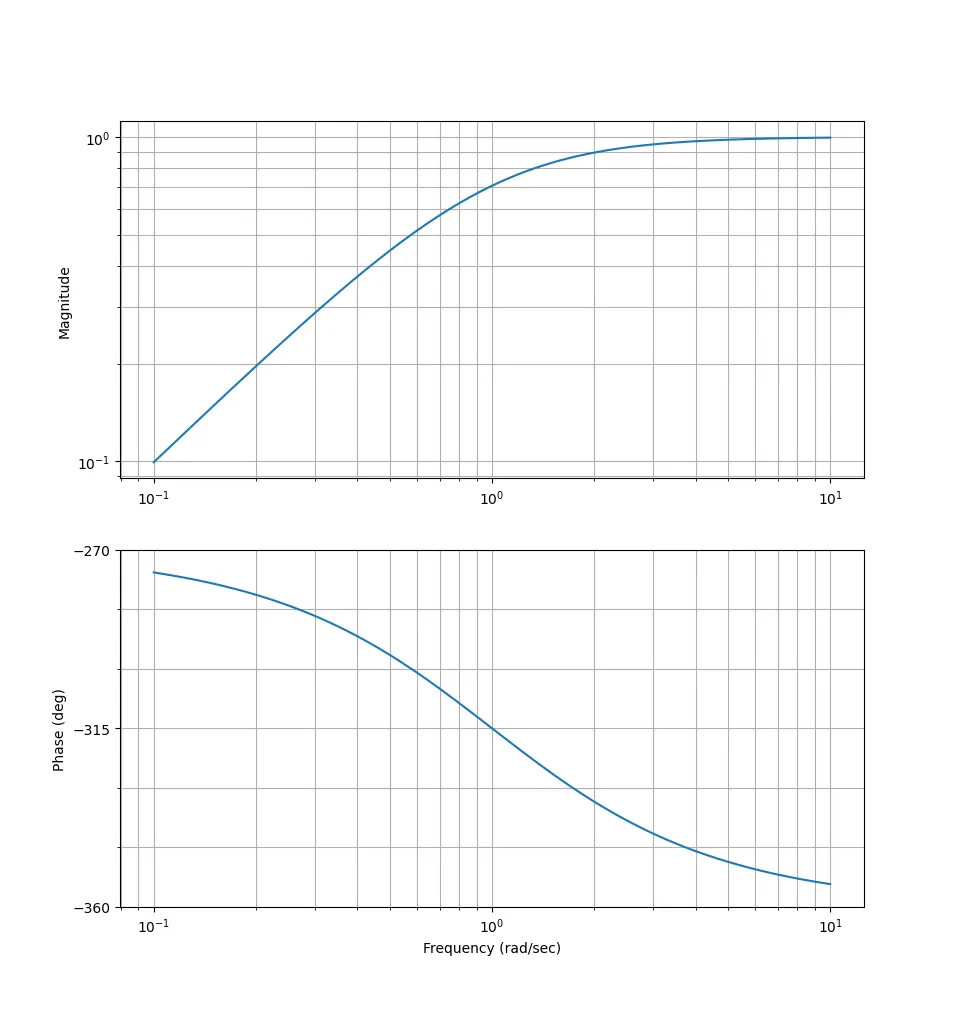Introduction
In this part we’ll understand the concept of filters.
Filters
We usually use filters for two different purposes:
- Frequency elimination
- Frequency detection
Example
Say we have the following system: $$ G(s) = \dfrac{a}{s + a} $$
What type of filter is this? Let’s find out. Plotting the bode plot will help us.
 Note: This is for $a = 1$
Note: This is for $a = 1$
We can see that this is a low-pass filter! We will call the part that lets through the frequency for passband. The range that gets eliminated/attenuated is the stopband.
For a high-pass filter, the general form is: $$ G(s) = \dfrac{s}{s + b} = \dfrac{\frac{s}{b}}{1 + \frac{s}{b}} $$
 Note: This is for $b = 1$
Note: This is for $b = 1$
Filter types
So far we’ve seen low-pass and high-pass filters. Let’s list all the filters that we’ll work with:
- Low-pass (LP - low pass, high gets filtered out)
- High-pass (HP - high pass, low gets filtered out)
- Band-stop filter (BS - frequencies within a specific range gets attenuated, rest are unfiltered)
- Band-pass filter (BP - frequencies within a specific range pass, rest are attenuated)
- Notch filter (Filters exactly one frequency)
Butterworth filters
When we need to perform filter realization, we usually will restort to Butterworth:
$$ \text{Order 1: } G(s) = \dfrac{\omega_1}{s + \omega_1} \newline \text{Order 2: } G(s) = \dfrac{\omega_1^2}{s^2 + 2 \zeta \omega_1 s + \omega_1^2} \ | \ \zeta = \frac{1}{\sqrt{2}} $$
Filter transformation
Say we have this filter: $$ G(s) = \dfrac{1}{s + 1} $$
This is a low-pass filter. Say we want another type of filter from this - what should we do?
- Switch of break-frequency point to $\omega_c$ (cut-off)
Say we want to go from LP $\to$ HP, then we need to set: $$ s \to \frac{s}{\omega_c} $$
$$ G(s) = \dfrac{1}{\frac{s}{\omega_c} + 1} = \dfrac{\omega_c}{s + \omega_c} $$
In the case we had a second order filter: $$ G(s) = \dfrac{1}{\frac{s^2}{\omega_c^2} + \sqrt{2} \frac{s}{\omega_c} + 1} = \dfrac{\omega_c^2}{s^2 + \sqrt{2}\omega_c s + \omega_c^2} $$